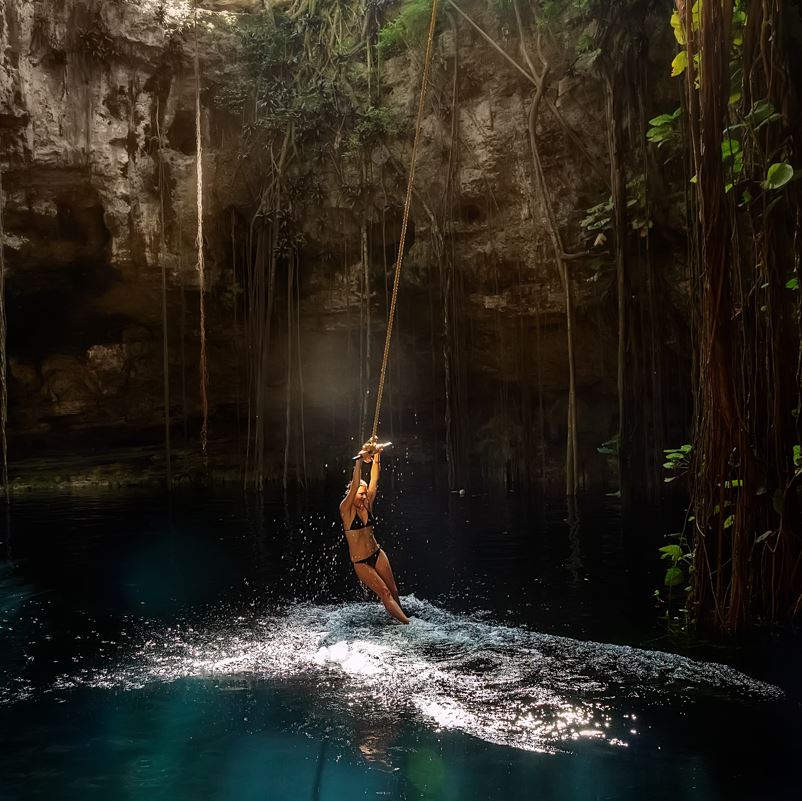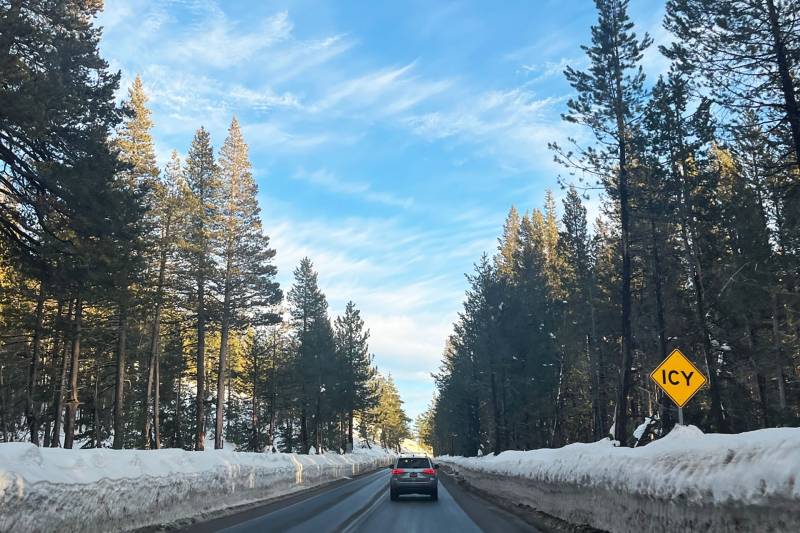
Terri Gentry is standing in the middle of the Five Points nei ghborh ood northeast of downtown Denver. She can remem ber the history of nearly every storefront.
“ A lot has changed down here and we have new businesses in some of the places,” she said, walking down the street. “Like the delicatessen is still there, Sherry’s is still available. 715 Club is closed, but there is a pizza restaurant, to-go pizza right there.”

Gentry has deep roots here. Her great – grandparents on both sides of her family came to D enver in the early 1900s. Her grandparents, parents and siblings all grew up in the Whittier and Five Points area.
“This was their neighborhood,” she said. “They were here all the time visiting different businesses and going to different events here and knowing the people that operated a lot of the businesses.”
Gentry grew up in the Clayton neighborhood, not far from Whittier . As a high school student , she’d come down to Five Points in the ’70s to grab lunch or hang out after school.
“It was just an incredible place to grow up in,” she said. “Clothing stores, Selman’s records. Anything you needed, there was a little store down here for you to go in and shop. It wasn’t just restaurants and bars. There were every kind of store.”

But it wasn’t until she grew up that she realized this safe haven for B la ck peopl e didn’t exist everywhere .
“You discover that when you leave the neighborhood , or you go out of town and you travel somewhere , and the way you’re treated,” she said. “That’s what my rude awakening was.”
That’s why Gentry’s family – like many Black people across the U.S. – relied on a national travel guide: the Green Book.
Published from the 1930s to the 1960s, it listed restaurants, lodging and shops that were safe for Black Americans. Harrison’s Guest House in Las Vegas, the Rotisserie Inn in Salt Lake City and the Rossonian Hotel in Five Points were just some of the sites in the Mountain West.
Many of these sites lie along major highways connecting the Mountain West, like Route 66 and U .S . Route 50. The Green Book was essential to travelers in th e region due to the long stretches between safe destinations.
Yet over time, dozens of these western sites have been lost to redevelopment or gentrification. The National Park Service reports that nationally, fewer than 20 percent of these places still exist today. Even fewer are still in operation.
N ow, History Colorado is using a nearly $75,000 grant from the National Park Service to survey old Gre en B ook s ites and bring awareness to these la ndmarks across the state.
“There are just so few left,” Patrick Eidman, the chief preservation officer at History Colorado , said. “We want to help be part of the solution towards seeing them be preserved and understood and interpreted.”
Traveling while Black
The Green Book was not the only travel guide of the era. Members of the Black community were always looking for ways to share travel information.
G entry noted that her grandfather worked as a waiter on the Union Pacific Railroad and made connections all over the country. People would come to him for information back before there were travel guides.

Victor Hugo Green
/
Wikimedia Commons
“There was always some kind of way to make sure everybody knew what to do, to take care of themselves and to take care of their neighbors,” she said. “We were always figuring out a way out of no way.”
If the Black community did not go to places listed in the Green Book, there was a greater fear of discrimination, violence and potential death. Gentry recalls one distressing family trip in the South.
“We were just north of Little Rock and the rear passenger tire brakes started smoking, so we pulled over to the side of the highway and this young white man stopped and picked up my grandfather and took him into town,” she said. “My grandfather was very low key and quiet and he never looked in the man’s eyes. He kept his eyes down…and this man was saying some nasty, condescending things to my grandfather.”
Gentry learned from that interaction – and many others – to maintain cert ain b ehavi ors while sh e trav eled to be safe . Her family ch ose specific routes and dev eloped certain routines to minimize ra cist or d iscri min atory encounters.
“You have a full tank of gas when you’re traveling,” she said. “You make sure you’ve got a picnic basket full of foods. You don’t have to stop at the restaurants and you make sure that you know where another safe place will be as you continue to travel.”
The dangers extended well beyond the South. In the Mountain West, Ku Klux Klan members held government posi tions in Colorado in the ’20s . M any s undown t owns existed throughout the region — commu nities seen as unsafe for non-white people after sunset.
Gentry’s family tended to be cautious. Gentry said they would stay away from the “L Towns” in Colorado – like Lyons, Longmont and Loveland. They also rarely stayed at hotels . I nstead, they t raveled in a camper to National Parks so they could s le ep in the comfort of their car.
“It’s a matter of having to be very, very conscious of your surroundings and conscious of where you’re going and what you’re confronting all the time,” Gentry said. “You just never know.”
This racial tension continued beyond the Jim Crow era. She recalls traveling with her husband and friends through some small towns on their way to Boise, Idaho in 1991 when people at a gas station targeted them with racial slurs and threats.
“It didn’t stop with the Civil Rights Act and the Voting Rights Act and all of those things that happened in the ‘ 60s ,” s he said. “This was in 1991 and we were still having to confront that and pay attention to where we were and what we were dealing with…it never stops.”
Preserving these places
The Green Book sites have historical significance, but many are no longer standing and others are threatened. That’s where History Colorado hopes to help.
“There’s a really marked difference, I think, between looking at a photo and talking about a place and being able to stand in front of it and say this place is important to civil rights history in Colorado,” said Eidman, History C olorado ‘ s chief preservation officer.
History Colorado got its nearly $75,000 grant in December as part of a National Park Service grant program for underrepresented communities to help recognize sites l ike those listed in the Gree n Book s.
“It’s a major priority for our office right now too, but I suppose also for the P ark S ervice as we look at Colorado history and national history, really to understand and record and study the broader history rather than just focusing on white – dominant culture ,” Eidman said.
The grant p rovides additi onal fund ing to build off of a project History Colorado completed in 202 1 . D uring that p roject, History C olorado went through several Black travel books for Colorado a nd found t hat o f the 280 sites in the state listed in the books, 161 remain.
Over the next two years, the organization plans to do a deep dive into the history of these places by documenting sites through photographs, research and interviews.
“Sometimes these things can’t be learned through library research and published books,” Eidman said. “We just need to be in [the] community talking with folks about places of importance.”
From there, they plan to talk with property owners about designating these historic buildings . O ne of them will also be no minate d for inclu sion in the National and State Registers of Historic Places. With the cons ent of bui lding own rs , informational plaques will be put outside the his toric buildings.
History Colorado states that only 8{d8a8d447f05f03c64398acf0d3c5a745c9c41fc784ba89cd5aecd37177dc7d51} percent of current sites in the National Register of Historic Places honor the history of comm unities of co lor as of 2020 . In Colorado , it’s only 5 {d8a8d447f05f03c64398acf0d3c5a745c9c41fc784ba89cd5aecd37177dc7d51} o f de signated histo ric pla ces.
“I’m excited for these associations to be way more accessible to the public, for people to understand what’s going on in these places,” said Poppie Gullett, the national and state register historian for History Colorado. “I really want us to recognize and appreciate that aspect of our history and understand that and empathize with the past , and make the future better for understanding it.”
Gullett noted that the once-popular Cotton Club in Colorado Springs was demolished in 1975. She said historical awareness is crucial for these places that are not often consi dered valua ble in the zoning and construction process.

Courtesy of Pikes Peak Library District – Digital Collections | 101-4846
/
“What we hope to see in the future is additional consideration for things that have this recognition , so we’re not losing places that were sort of like the heart of a community to just parking lots and urban renewal,” she said.
But this process takes time. History Colorado can’t start until the funds are released by Congress, which could be around mid – to late summer. T he project will not be fully complete d until 2025 or 2026.
Gentry believes this project will demonstr ate the histo rical significance of these buildings for the Black commu nity.
“It’s no longer just the fact that this building’s been here for 200 years and served this specific thing,” Gentry said . History Colorado also wants “to make sure they see who it served , and they want to see how it impacted the community.”
Five Points may not have all of the same businesses Gentry remembers from her youth. Still, Gentry believes this grant will give a voice to those who used the Green Book to e xplore Five P oints and b eyond a s well as show how the book made travel more ac cessibl e for Black people.
“So much of our history is invisible or discounted or dismissed,” she said. “If they’re going to talk about Colorado history, no matter the content, no matter how painful the content, they want to recognize and acknowledge and support all of the different communities in Colorado. …You don’t know the full story unless you get all of these perspectives.”
This story was produced by the Mountain West News Bureau, a collaboration between Wyoming Public Media, Nevada Public Radio, Boise State Public Radio in Idaho, KUNR in Nevada, the O’Connor Center for the Rocky Mountain West in Montana, KUNC in Colorado, KUNM in New Mexico, with support from affiliate stations across the region. Funding for the Mountain West News Bureau is provided in part by the Corporation for Public Broadcasting.
Copyright 2023 KUNC. To see more, visit KUNC. 9(MDExNDExMTQwMDEzNjkwODAzMTkxNmQ4Zg004))







